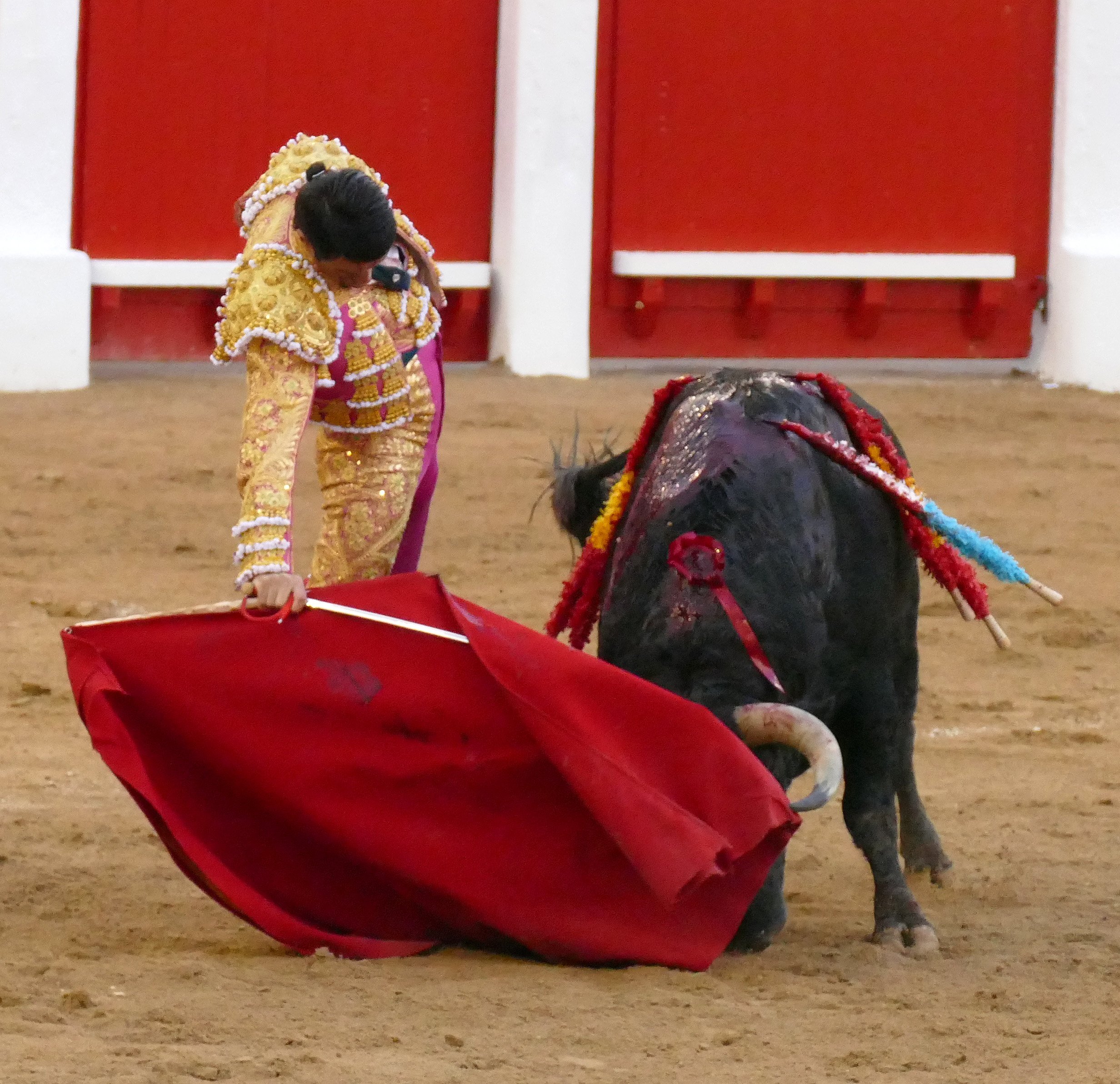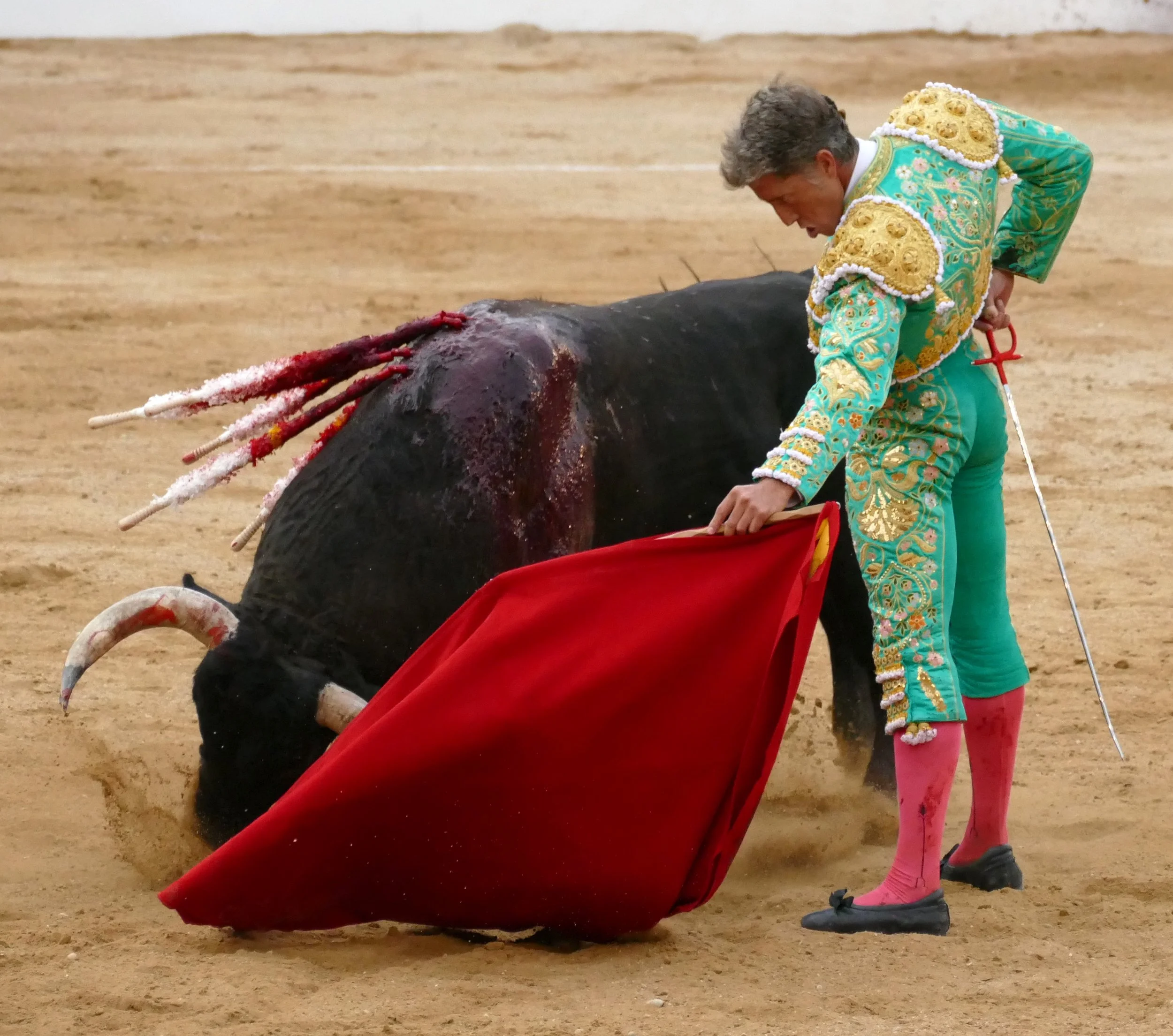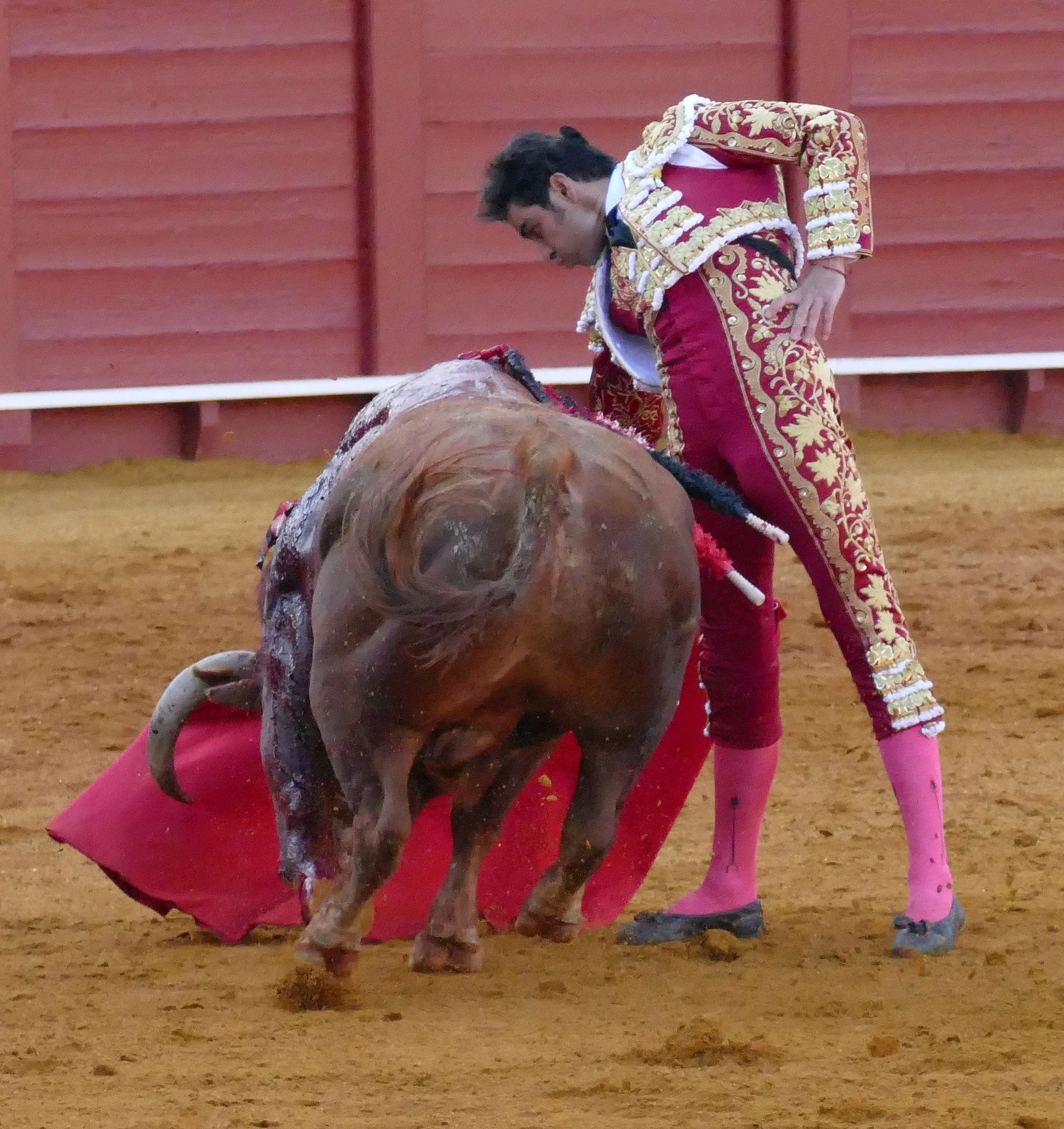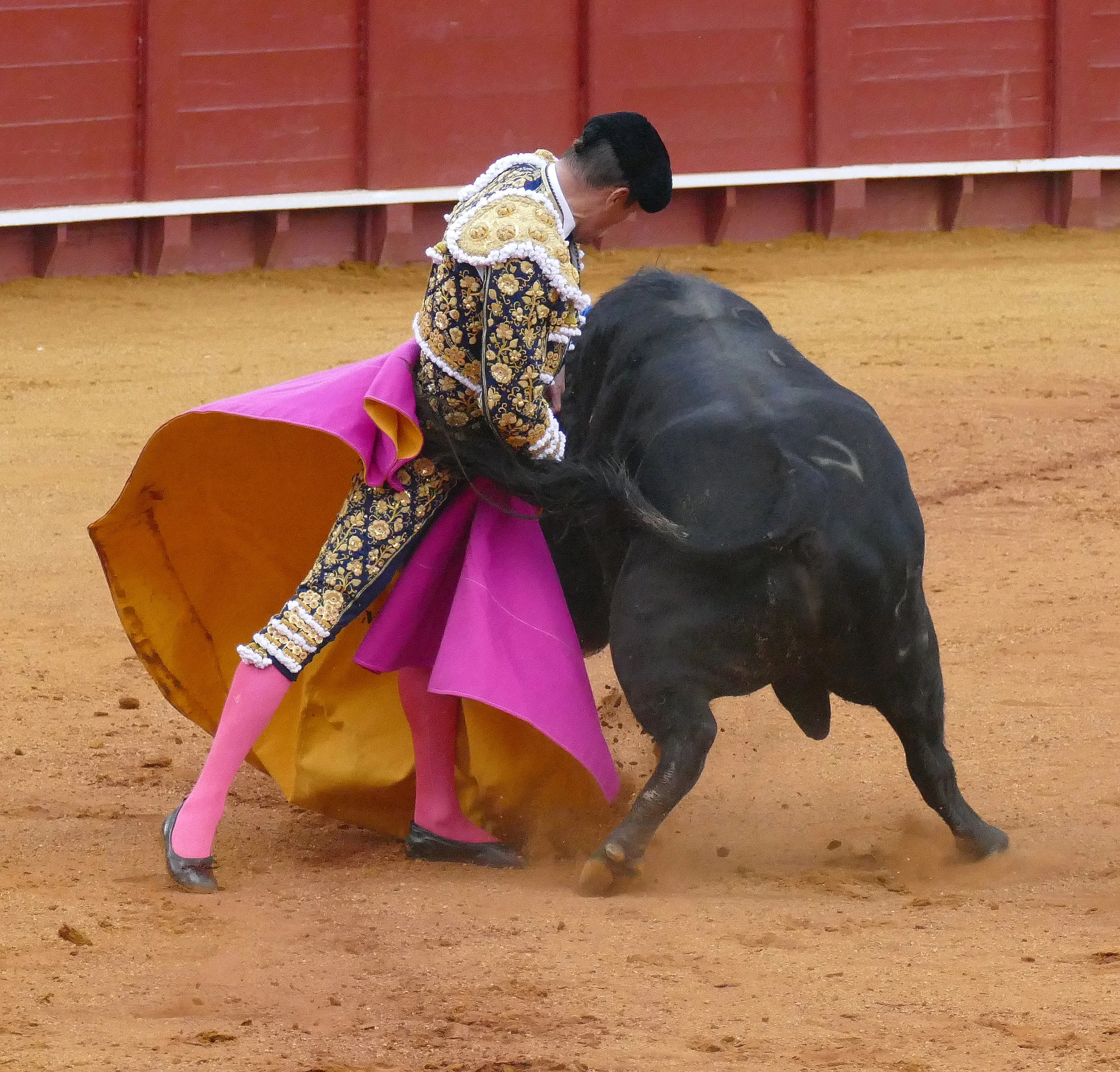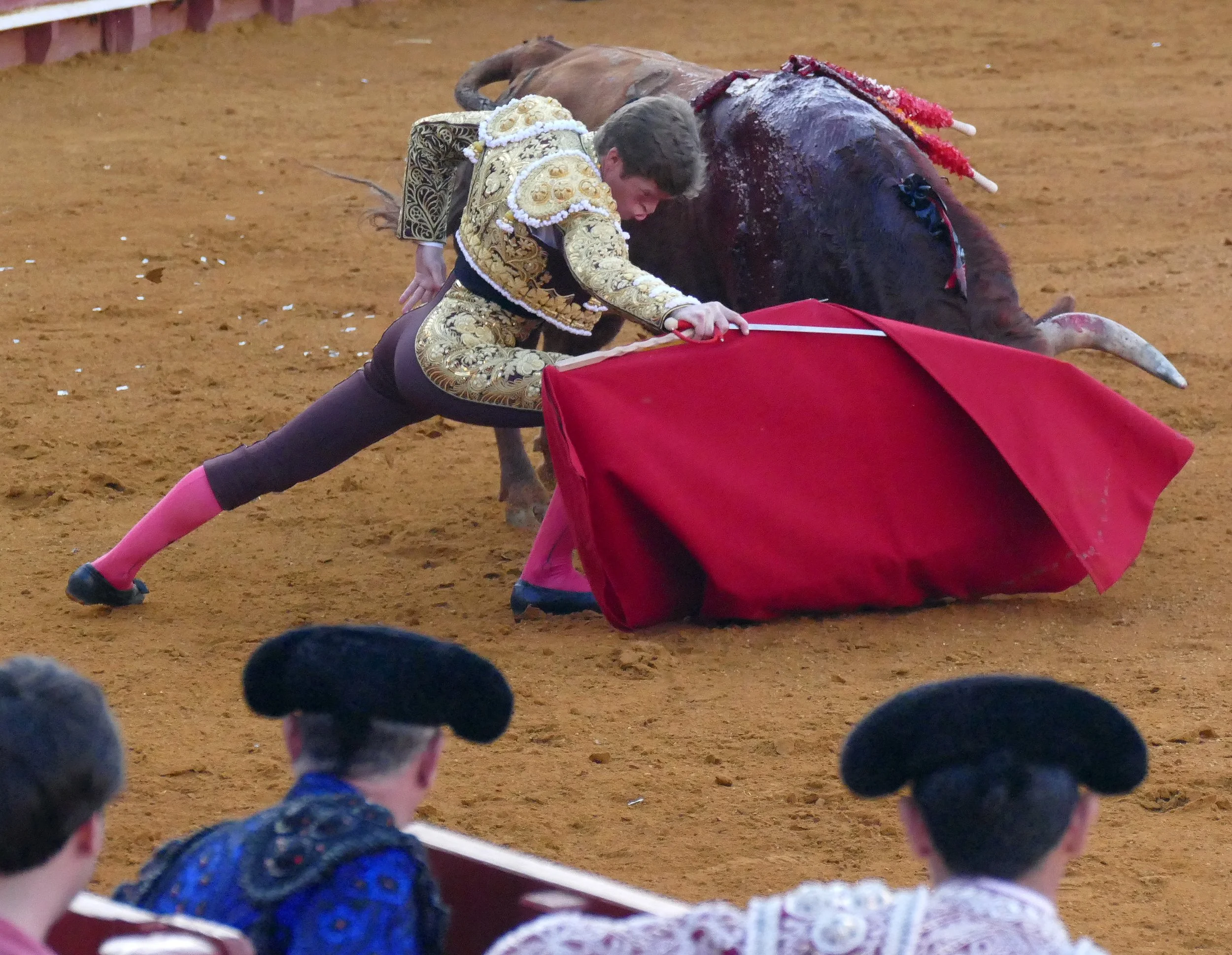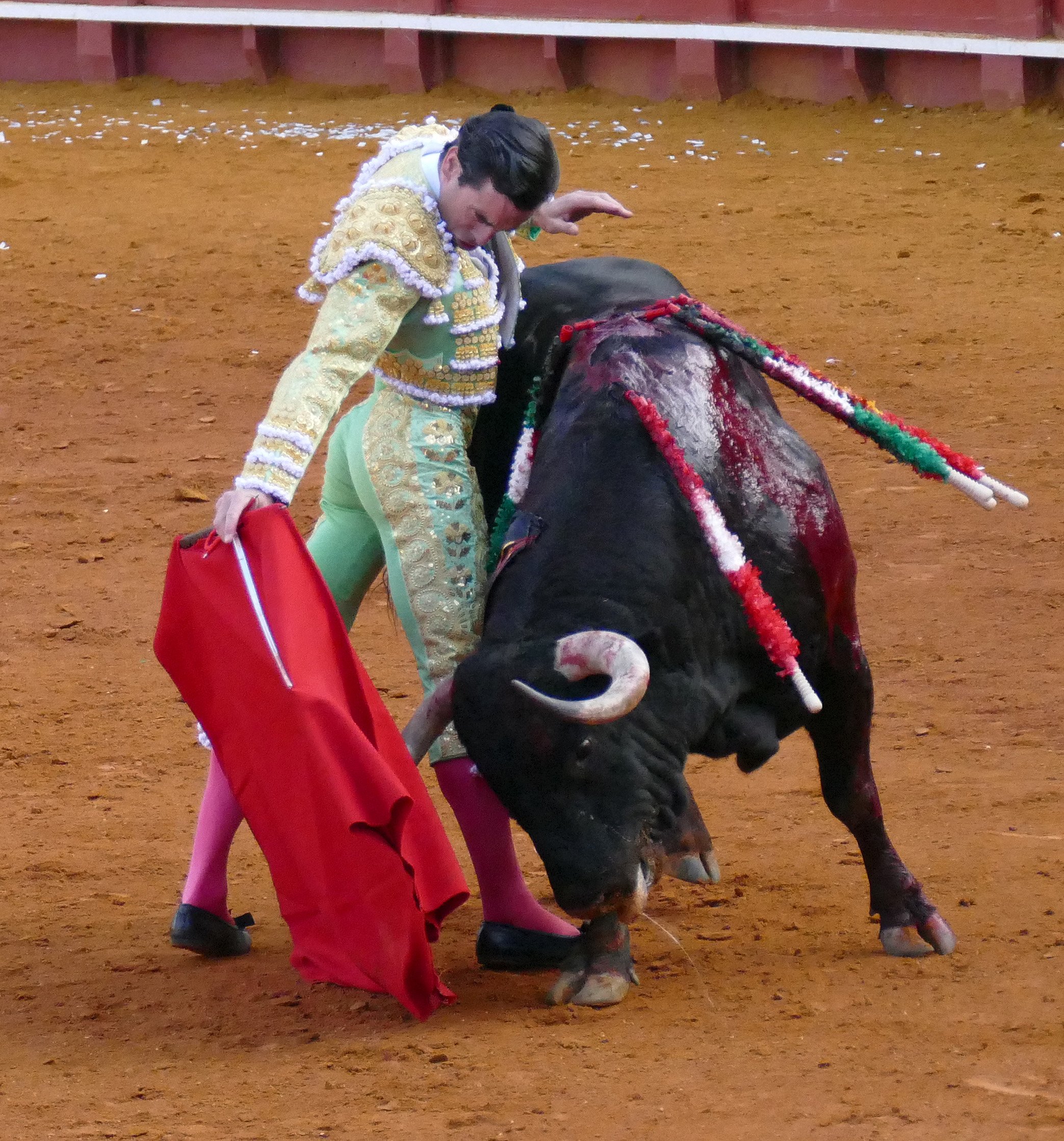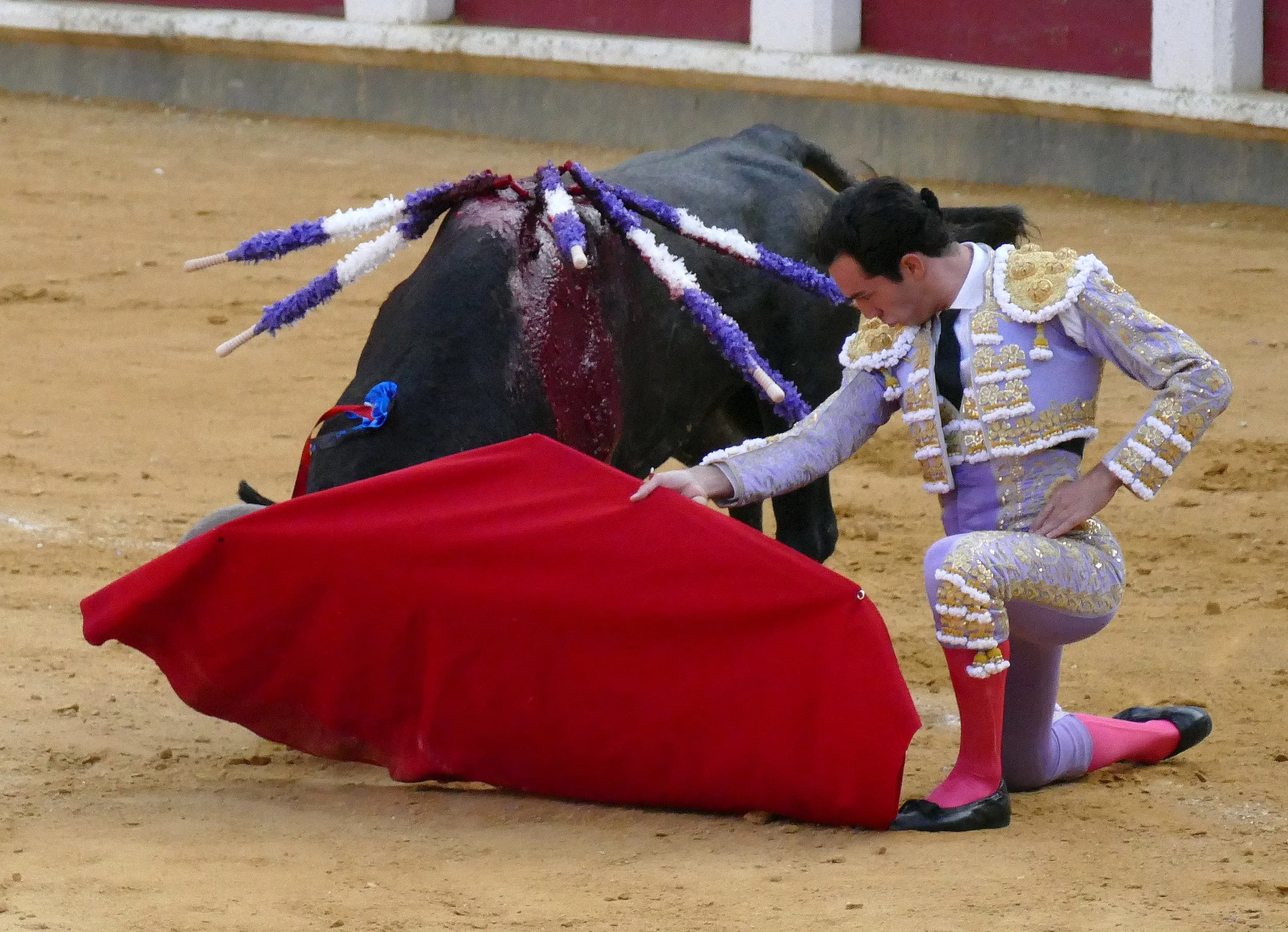Top of the escalafón: a largely moribund baker’s dozen (2025 Season Review Pt2)
Alejandro Talavante - top of the 2025 escalafón de matadores
Old blood
With Morante de la Puebla unable to fulfill a number of his contracts, the standby figura of Alejandro Talavante (alternativa 2006) headed the 2025 escalafón with 106 ears and six tails cut from 65 appearances. His temporada began with a salida a hombros at Illescas in March and ended with a similar outcome at Jaén in October. In between, his major successes came at Olivenza, Navalmoral de la Mata (an indulto of an alcurrucén included), Arnedo, Moralzarzal, Madrid, Talavera de la Reina, Jerez, Sanlúcar de Barrameda, Marbella (a double indulto of El Freixo bulls), Granada, Alicante (with a Núñez del Cuvillo bull indultado), Segovia, Estepona, Tudela, El Puerto de Santa María, Huesca, Béziers, San Sebastián, Gijón, Almagro (including an indulto of a Cayetano Muñoz bull), Palencia, Andújar, Cehegín and Almodóvar del Campo. The Madrid triumph came on the first afternoon of the San Isidro feria and was a surprise to many viewers outside the plaza and to some (including this writer) in it, and a later decision to declare him triunfador de la feria was similarly controversial. Nevertheless, this was a broadly successful temporada for someone in his 20th full season as a matador de toros and an improvement in terms of consistency when compared to his 2024. The extremeño’s toreo is a familar thing by now, but the empresas remain keen to put him on and the general public appears willing to continue to see him.
Alejandro Talavante during his successful San Isidro afternoon
Emilio de Justo (alternativa 2007) was third in the escalafón with 89 ears and a tail cut from 52 appearances. His season began in February with a salida a hombros at Valdemorillo. March brought an unsuccessful afternoon at Las Fallas, but a four-ear triumph at Cariñena. April saw triumphs at Baeza, Lorca, Arles and Mérida. Successful afternoons continued in May at Jerez de los Caballeros, Valladolid and Cáceres, while his two San Isidro appearances netted one ear. June saw a bache, with just two triumphs - at Villafranca de los Barros and Algeciras - from nine corridas, although he did win an ear from a victorino at Madrid’s Corrida En Memoriam. July was better, with salidas a hombros at Burgos, Arévalo, Eauze and La Linea (winning five ears in a mano a mano victorinada), while August brought success at Ciudad Real, Guijuelo, Málaga, Antequera and Priego de Córdoba. September was a busy and largely successful month, with big triumphs at Valladolid, Salamanca (where a Garcigrande bull was indultado) and Murcia before his season was brought to an end with an heroic performance in Las Ventas, Emilio returning to torear his second bull after being injured by his first, winning two ears and leaving by the Puerta Grande.
Emilio de Justo keeping the bull away
On paper, this all looks pretty good, but it is clear to those of us who have been watching Emilio for years that he is slipping into the habits of Manzanares hijo and generally keeping the bull at the pico end of his muleta. He also - as Madrid demonstrated - continues to be vulnerable when killing.
Verónica from Sebastián Castella at Sevilla
Sebastián Castella (alternativa 2000) finished sixth in the escalafón, just behind Morante de la Puebla, on 47 corridas from which 67 ears were cut. The Frenchman’s main successes came at Castellón in March; Arles in April; Bayonne in July (a six-bull encerrona that yielded four ears); Palma de Mallorca, Pontevedra, Béziers (five ears from his first two of three corridas in the feria to mark his 25th anniversary as a matador de toros) and Linares in August; Palencia and Albacete in September; and Zaragoza in October. Elsewhere, there tended to be a litany of single ear results while his sole encounters with ‘serious’ bulls - victorinos at Granada and pedrajas in that third Béziers afternoon - were unsuccessful.
Manuel Escribano with a miura at Santander
Manuel Escribano (alternativa 2004) was next up in the escalafón, with 71 ears and two tails cut from 38 corridas - 54 of those orejas were won at third class plazas (the third highest tally in that category behind El Fandi and Borja Jiménez). Popular as a matador-banderillero and a specialist with toros duros, Manuel performed well with miuras at Inca; with victorinos at Sevilla and Alicante (five ears and an indulto in an encerrona at one of his key plazas); and with murteiras at Herrera del Duque. But there were disappointments with miuras in Sevilla and Santander and adolfos in Madrid and, once again, he failed to make a breakthrough with more commercial fare despite successes with fuenteymbros in Berja; the murubes of Castillejo de Huebra at Almendralejo and Utrera; bañuelos at Baeza; lagunajanadas at Tarifa and Villamartín; albarranes at Arenas de San Pedro and Barcarrota; and alcurrucenes at Piedrabuena.
Andrés Roca Rey enjoyed a moderate but successful temporada
The acknowledged main crowdpuller (along with Morante de la Puebla) Andrés Roca Rey (alternativa 2015) had a relatively low-key season in terms of numbers of corridas - just 38, from which 51 ears were cut - and ended up eighth in the escalafón. Controversy continued to follow him - his break-up with Roberto Domínguez for what turned out to be one season’s management by his brother Fernando; his largely mute albeit central participation in the film ‘Tardes de Soledad’; the continuing refusal to appear with Daniel Luque; and the continued hostility of crowds at Sevilla and Madrid towards the young figura. Nevertheless, 2025 saw an evolution in his toreo with successes at Valencia, Málaga, Arles, Sevilla, Jerez de la Frontera (with an indulto of a jandilla), Córdoba, Toledo, Granada, Castellón, Huelva, El Puerto de Santa María, Dax, Bilbao, Palencia, Albacete and Murcia. All the indications are that Andrés, now managed by Luis Manuel Lozano, and, in the absence of Morante, in a stronger position to command top prices, wants a busier temporada in 2026.
Miguel Ángel Perera had a strong French temporada this year
Ninth in the escalafón was Miguel Ángel Perera (alternativa 2004). The extremeño had a slow start to the temporada, appearing in a number of festivales but not going out on shoulders in a formal corrida until early May at Trujillo. Sevilla and Madrid passed with but one vuelta al ruedo from five appearances, but he had a bull of Julio de la Puerta indultado at Osuna, cut two ears at Córdoba and left through the Consuls’ Gate at Nîmes. Istres, Mont de Marsan and Dax saw further triumphs on French soil. Cieza, Tarrazona and Palencia (with a La Quinta bull) brought further August triumphs and the season was rounded out with successes at Murcia and Consuegra. He took on victorinos at Granada and Pontevedra, murteiras at Herrera del Duque and pedrazas at Béziers amongst his more usual fare.
Daniel Luque in the middle of a tanda of luquesinas
Daniel Luque (alternativa 2007) had another year in the upper reaches of the escalafón, finishing 11th with 57 ears cut from 33 appearances, albeit another season effectively marginalised as a result of the veto of Roca Rey and the lack of a big triumph in Sevilla or Madrid. The sevillano’s chief successes came at Castellón in March; Nîmes and Segovia in June; Mont de Marsan in July; Huelva, Pontevedra (twice, including at a victorinada), Dax, Málaga, Cuenca and Tarazona in August; Arles, Dax and Murcia in September; and Zaragoza in October. All in all, with 19 fewer corridas than in 2024, it probably wasn’t the temporada he was hoping for, and the icing on the cake came at the season’s end when his new manager for 2025 dropped him in order to take on Andrés Roca Rey.
Media verónica from José María Manzanares
Twelfth in the escalafón was José María Manzanares (alternativa 2003), his 32 corridas yielding 37 ears and a tail. It took him nine corridas to achieve his first salida a hombros, at Aranjuez on June 1. At Nîmes later that month he left through the Consuls’ Gate after winning three ears, and three ears and a tail (with an indulto) followed in a controversial corrida at Marbella. Alicante and Estepona were the only other plazas to see two-ear faenas from the matador in what was a pretty dismal temporada.
El Fandi with the banderillas
Rounding out the baker’s dozen in position 13 in the escalafón was another veteran, David Fandiola El Fandi (alternativa 2000) with 78 ears (61 of these from third class plazas) and seven tails from 31 corridas. The tails came at Morón de la Frontera, Berja, Utrera, Barcarrota, Navaluenga, Cazorla and at Jaén on October 12 (his best performance in a second class plaza). La Casa Matilla got him into the top ferias of Sevilla and Madrid with a single afternoon apiece, but without success, while he did manage to cut two ears from a victorino in his home plaza of Granada and four ears from miuras at Sanlúcar de Barrameda. This was very much a minor temporada for the old-timer, however, and it was no surprise to see him dropped by los Matilla at the season’s end, to be picked up by Alberto García of Toroemoción for what I expect to be an even more minor temporada in 2026.
New blood
With 10 of the top 13 places in the escalafón taken up by an established young figura and matadors who have been active as such since at least 2007, there was little room in the upper echelons for anyone who has taken the alternativa more recently.
Borja Jiménez - runner-up in the escalafón
Highest of the more recent discoveries was Borja Jiménez, who took the alternativa a decade ago, but only really broke through in 2024, when he came eighth in the escalafón on 40 corridas. This year, he finished second with 57 corridas and a tally of 97 ears and six tails. 2025 was not as explosive a temporada as last year, but the sevillano cut more ears (20) than anyone else in the first class plazas, with triumphs at Sevilla, Madrid, Dax, Béziers and Bilbao (where he secured the plaza’s first-ever indulto). His season began badly with a tossing at Valencia’s Las Fallas that left him with a couple of broken ribs and damaged vertebrae, but 10 days later he was back toreando at Almendralejo and left the plaza on shoulders. His somewhat generous two ears at Sevilla on May 2 was indicative of the public enthusiasm behind him after his successes last year, but, despite a triumph at Trujillo and winning an ear in Madrid on his initial San Isidro appearance, he did seem to be in a bache in the temporada’s early months, culminating in a disastrous encerrona with victorinos on his debut at Nîmes on June 9, when there was one ovation and five silences. Two ears at Plasencia on June 15 indicated a return to form, and the following day - with victorinos once more - Borja achieved another Puerta Grande triumph at Las Ventas. Results were strong for the rest of the season, the matador’s main successes coming at Zamora, Soria, Manzanares, Roquetas de Mar, Inca (including an indulto of a fuenteymbro), Dax, Béziers, Bilbao, Cieza, Linares, Tarazona, Priego de Córdoba, Colmenar Viejo, Baza, Murcia, Guadalajara, Logroño, Fregenal de la Sierra and Jaén. By season’s end, he had consolidated his position amongst today’s leading toreros.
Juan Ortega wrapping his bull round him
Juan Ortega, who took the alternativa in 2014, finished fourth in the escalafón with 44 ears and a tail cut from 51 corridas, representing a slight increase in contract numbers and trophies and escalafón position compared to 2024. Two-ear faenas occurred at Illescas, Castellón, Córdoba, Aranjuez (where a tail was cut also on an excellent afternoon), Gijón, Colmenar Viejo, Melilla, Ejea de los Caballeros, Aranjuez again, Murcia and Ûbeda. In the other three-quarters of his temporada, there was less to show for his efforts; April and May were not good periods, and July and August little better. He remains an artista who needs a good bull in order to do well. Time will tell whether he can maintain a position near the top of the escalafón and become more successful with animals that are less pleasing to him.
Tomás Rufo took on victorinos at Valladolid (seen here) and Dax
Tomás Rufo (alternativa 2021) was the only matador with an alternativa in the current decade to make it to the top 10 of the escalafón, finishing 10th on 34 corridas, from which 56 ears and a tail were cut. Switching his management for 2025 from los Lozanos to Víctor Zabala de la Serna, the gerente of Madrid and Valencia, Tomás hoped for more corridas and greater impact. His corrida numbers increased slightly, but the greater impact - so nearly achieved in Las Ventas on May 23 when three attempts with the estocada lost him a Puerta Grande triumph - didn’t happen. Triumphs were secured at Valencia, Arles, Talavera de la Reina, Móstoles, Alicante, Burgos, Pamplona, Ondara, Huesca, Gijón, Ciudad Real, Valladolid (with victorinos), Valencia de Don Juan, Nîmes, Guadalajara, Abarán (an indulto included) and Arenas de San Pedro. Rufo will be trying hard to make his mark again and improve his standing in 2026.


